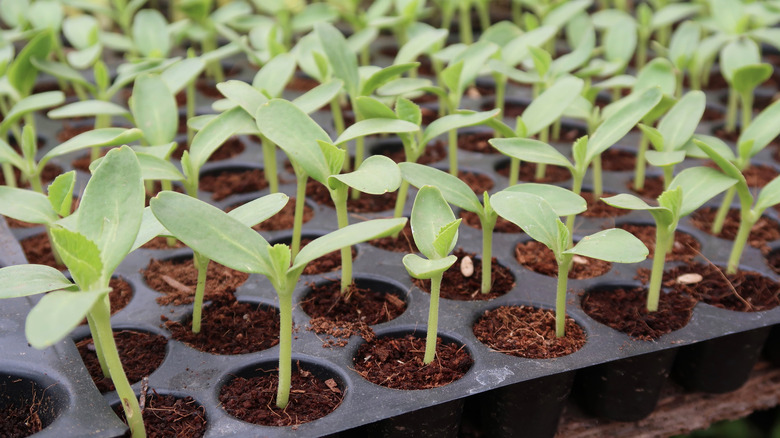One of the most exciting parts of starting a garden is the prospect of a large harvest to celebrate the hard work. That being said, a robust harvest depends on healthy plants and requires planning. Thinning seedlings before transplanting them into the garden is a proactive strategy to ensure a bountiful harvest. By beginning with well-spaced, vigorous seedlings, you can set the stage for healthier, more productive plants. Start seeds in trays or containers, ensuring they have enough space to grow initially. Follow the recommended planting depth and spacing for your specific vegetable variety, as overcrowded seedlings can lead to stunted growth.
Once the seeds germinate and grow their first set of true leaves, it’s time to assess their health and select the strongest seedlings. They’ll have robust stems and well-developed leaves. At this stage, many gardeners use a pair of scissors to snip the tops off of the weaker seedlings, disposing of the cas- offs. While this can produce stronger plants for those remaining, it seems like a waste to throw away potential veggies. Instead, gently pulling up the smaller seedlings at the base and replanting them in their own fresh soil, more spaced out, is a great option that typically renders viable plants at a 60% to 70% success rate. Once the plucked seedlings are in their own soil, gently tamp down the soil around them and be sure to give them a good watering and plenty of sunlight in order to increase your veggie garden yield.
Why thinning seedlings is essential for healthy plants

Thinning seedlings is a fundamental gardening practice that leads to healthier plants and ultimately a more productive garden. This practice ensures that each remaining plant has ample access to essential resources such as sunlight, water, and nutrients. When seedlings are too close together, they compete for these resources. As they grow, they can shade each other, leading to leggy, weak stems. With reduced competition, the remaining plants can focus their energy on growth, resulting in stronger stems, larger leaves, and better overall plant health. Dividing your seedlings into new trays will increase the odds that all of your plants survive, not just the strongest ones.
Moreover, overcrowded seedlings are more susceptible to diseases and pests. The lack of airflow between densely packed plants creates a favorable environment for the spread of fungal diseases. Additionally, pests are more likely to infest crowded plants, as it’s easier for them to move from one plant to another. Healthier plants are more resilient and better equipped to fend off potential threats.
Finally, thinning seedlings results in plants that are not only healthier but also more productive. Adequate spacing allows the plants to develop an extensive root system, which can absorb more nutrients and water from the soil. This increased resource uptake leads to more vigorous growth, larger fruits or vegetables, and better overall yield. The fruits, herbs, or vegetables produced are often of higher quality, with improved flavor and texture.